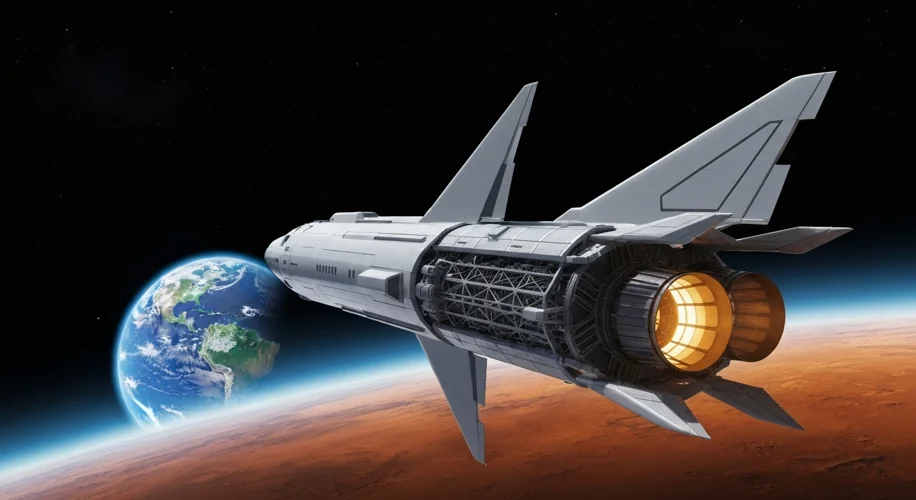It’s 2025, and we’re still dreaming of Mars. But what if that trip could be cut in half? That’s the exciting possibility being explored by scientists at Ohio State University, who are making significant strides in nuclear rocket engine performance.
Faster Than Ever Before
These researchers have achieved a remarkable feat: a nuclear engine that can operate for an astounding 1,800 seconds. To put that into perspective, traditional chemical rockets often achieve specific impulses in the range of 300-450 seconds. This jump to 1,800 seconds is a massive leap forward, promising much greater efficiency and speed for deep space travel.
Why is this so important for a Mars mission? Well, current chemical rockets can take anywhere from 6 to 9 months to reach the Red Planet. With this new nuclear propulsion concept, the journey could be slashed to as little as 6 months, or even potentially 3 months according to some reports.
How Does It Work?
At its core, nuclear thermal propulsion (NTP) works by using a nuclear reactor to heat a propellant, typically hydrogen, to extremely high temperatures. This superheated gas is then expelled through a nozzle, creating thrust. The key here is the efficiency of the reactor and the ability to sustain high temperatures for extended periods.
While the concept of nuclear rockets isn’t new, the specific advancements being made by the Ohio State team, particularly in achieving sustained high performance, are what’s generating so much buzz. They’re focusing on making this technology not just powerful, but practical and reliable for long-duration space missions.
What This Means for Space Exploration
Shorter travel times to Mars aren’t just about getting there faster. They also mean:
- Reduced Astronaut Exposure to Radiation: Less time in transit means less exposure to the harsh radiation of deep space.
- Lower Mission Costs: More efficient engines can mean smaller, lighter spacecraft, reducing launch costs.
- Increased Mission Flexibility: Shorter trips allow for more frequent missions and quicker turnaround times.
This work is a crucial step in making human exploration of Mars a more tangible reality. It’s incredible to see how advancements in fundamental science and engineering can bring us closer to the stars. I’m always amazed by the ingenuity of scientists pushing the boundaries of what’s possible!

